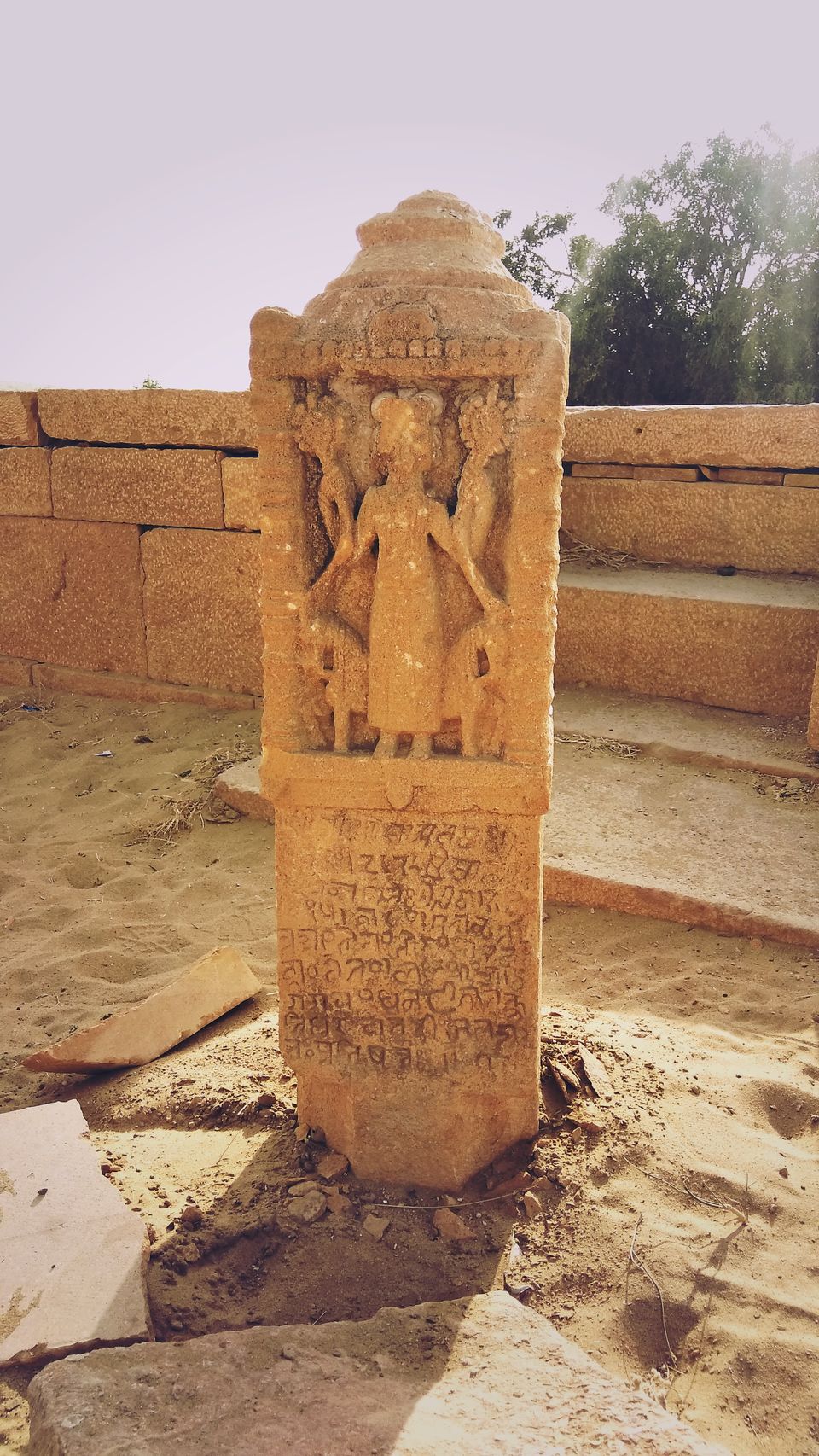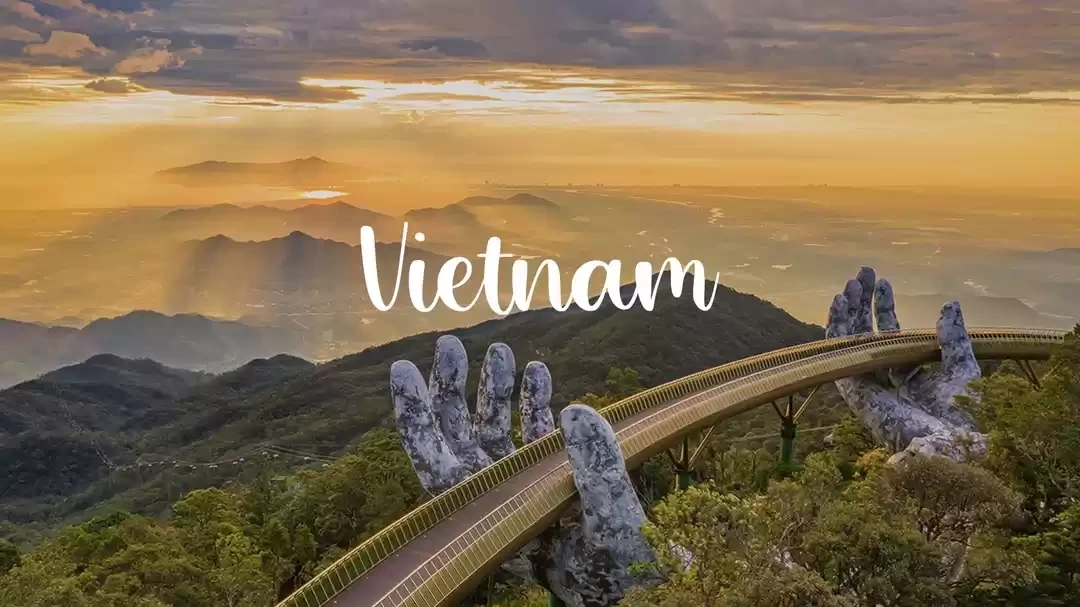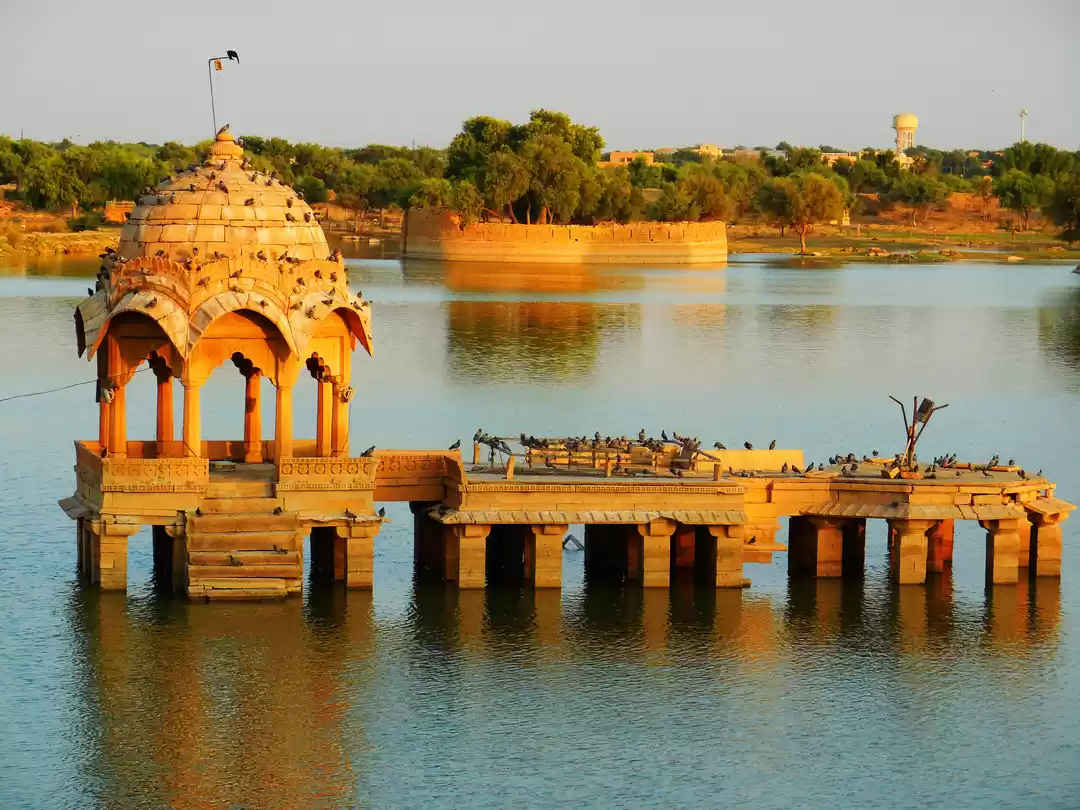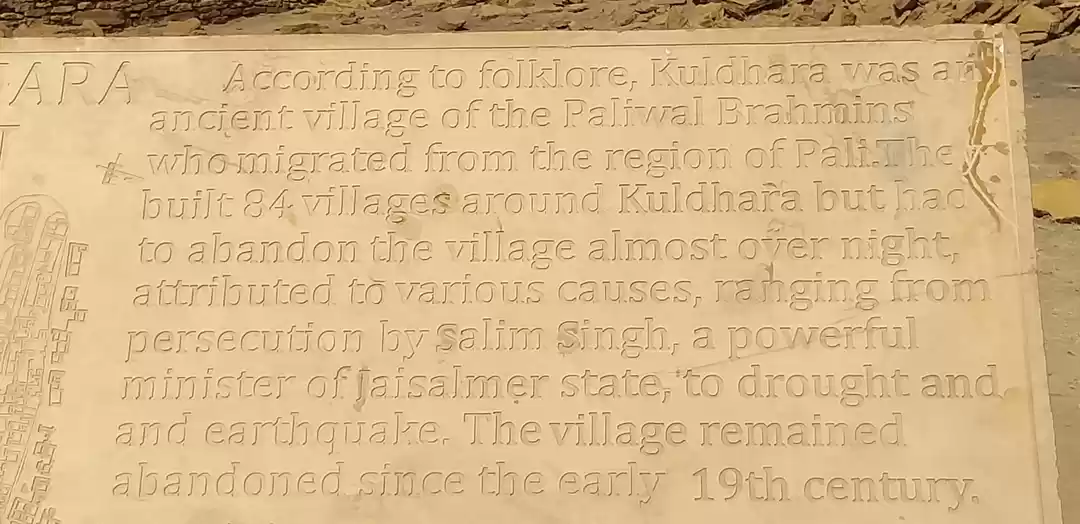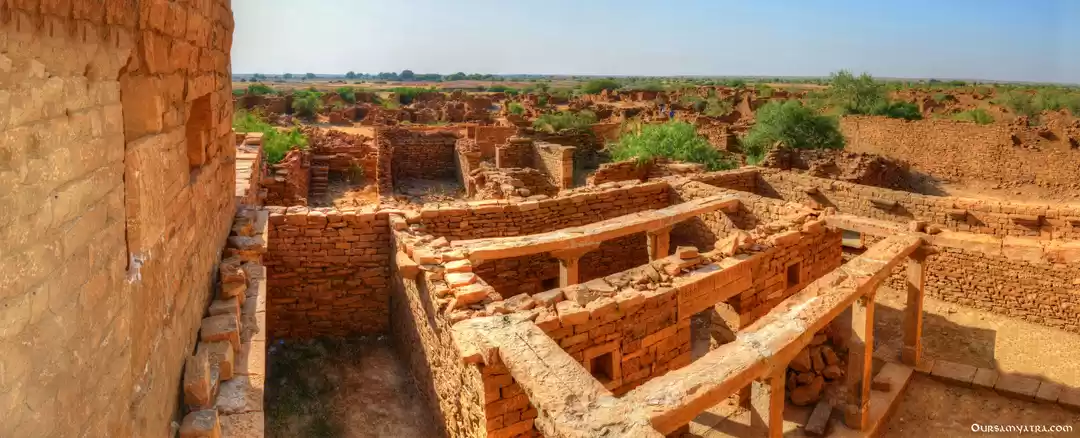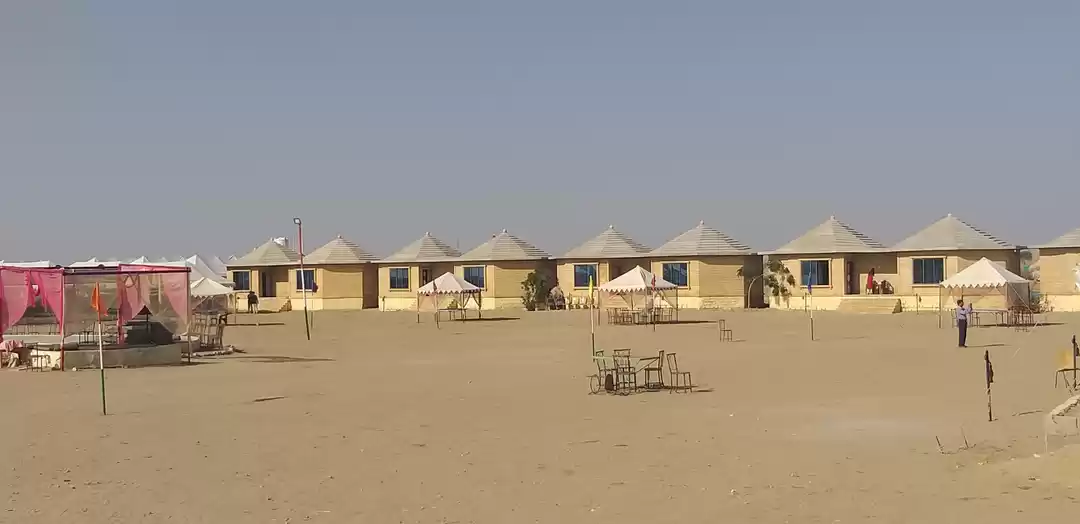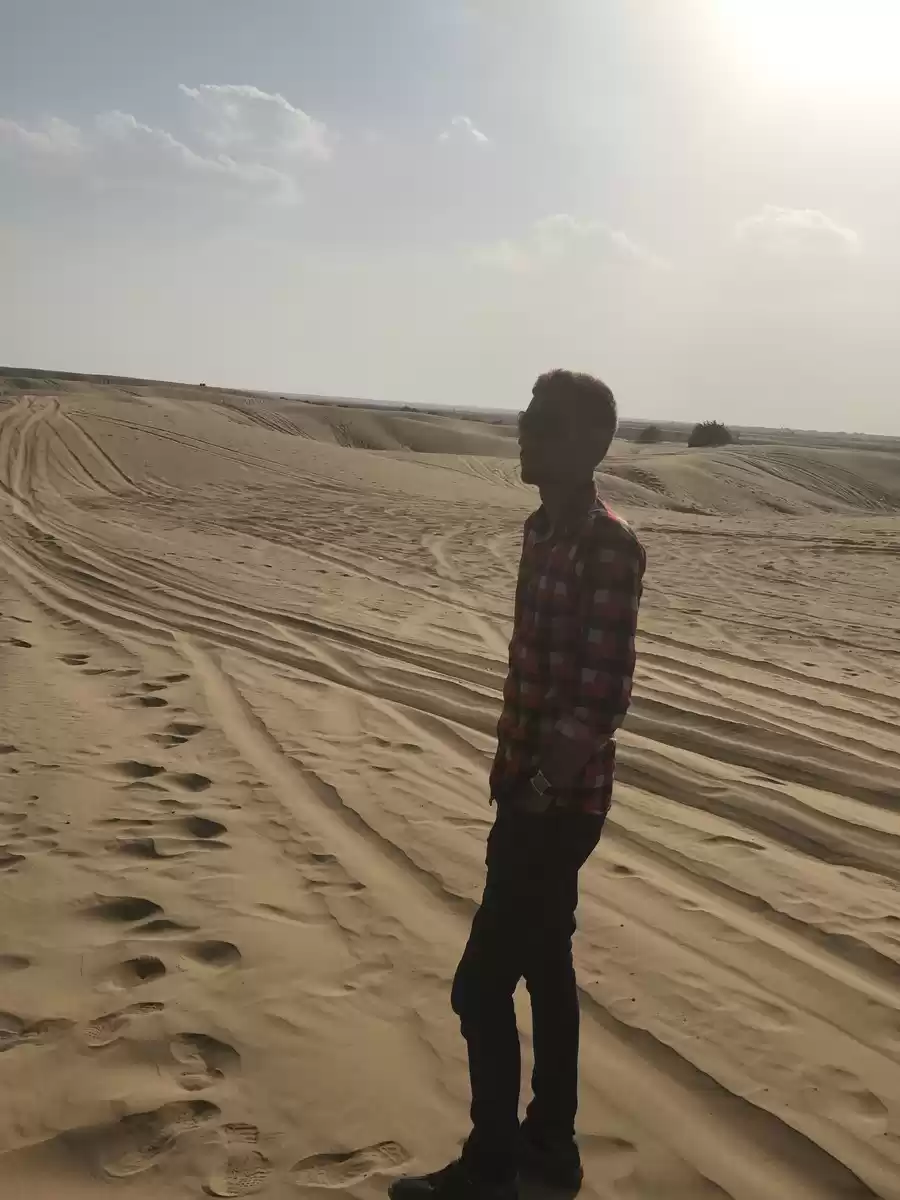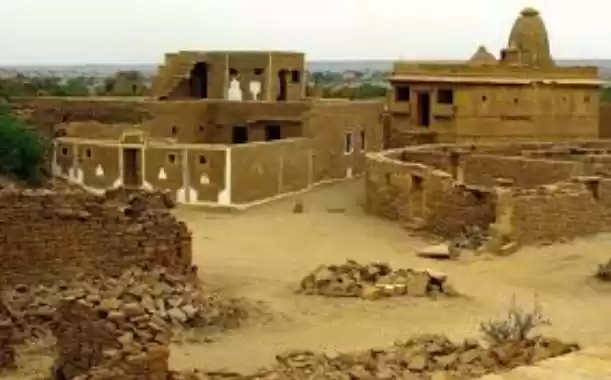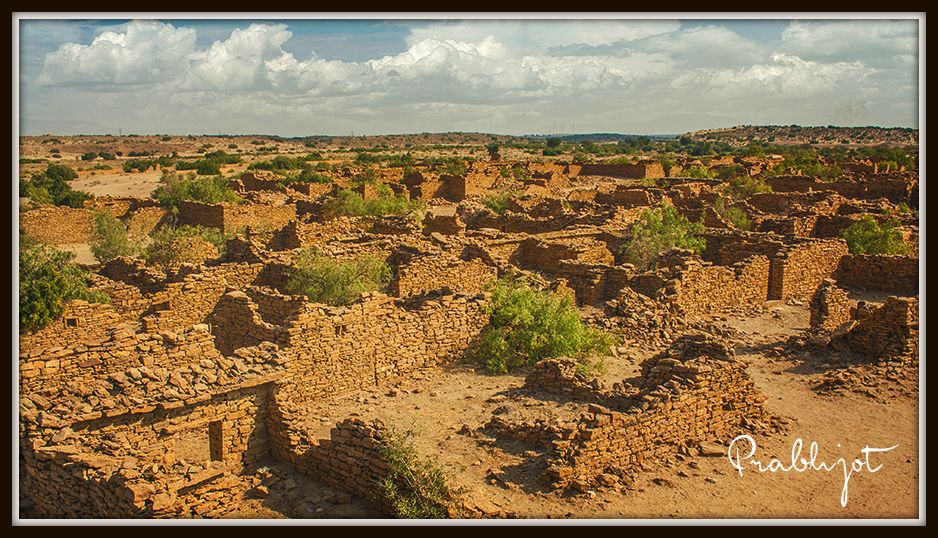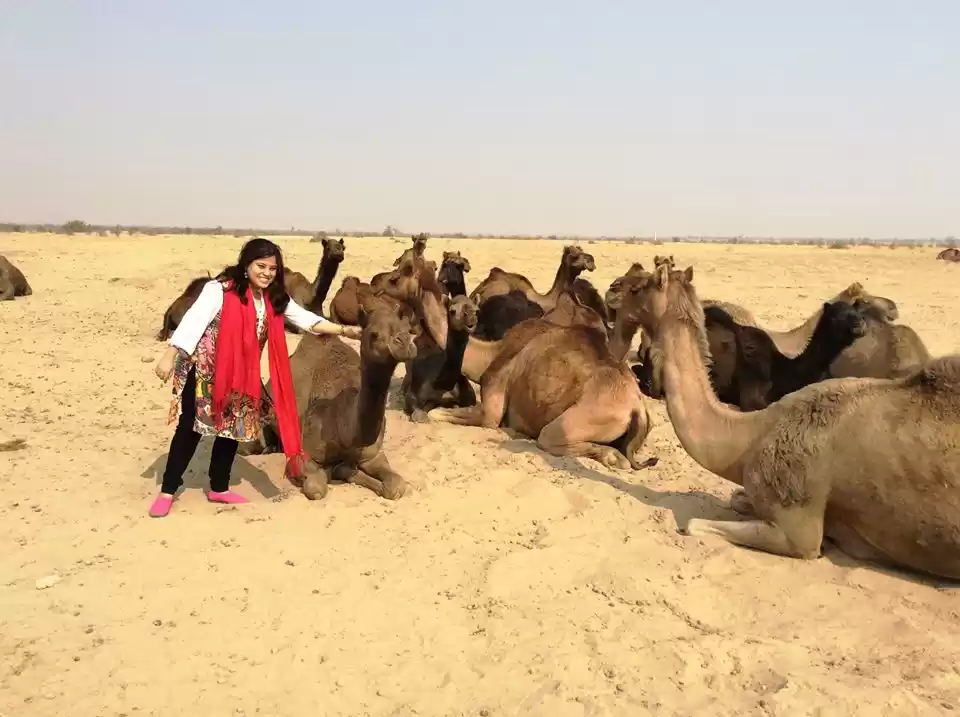A temple in the center of the village of Kuldhara, Rajasthan (India) is not scary because of some terrifying idol inside. It is instead eerie for the want of a deity in the sanctum. Resembling a regular Shiva temple in architecture, standing desolate for almost three centuries – this temple is as frightening as a haunted place in movies appear. The rooftop of the temple offers an aerial view of the entire village that has turned into ruins of a former glory.

This abandoned village, 19km west of Jaisalmer, is not called a ghost-village for no reason. The dilapidated walls and collapsed roofs of the brick houses, neatly laid out along two sides of the lanes, scream aloud the Kuldhara folklore to the tourists that visit this place.
The legend
We were traveling from Jaisalmer town to the Sam Sand dunes. About 37km prior reaching the Sam, our driver, Bhavru Ji, turned the car to the left. He drove us to this curious place called Kuldhara. He elaborated the local legend to us: The Kuldhara village was originally settled by Brahmins who had migrated from Pali to Jaisalmer region, and hence they came to be known as the Paliwals. Local people believe that the atrocities of the cruel minister of Jaisalmer, Salim Singh was the reason for the unfortunate turn of events. He is said to have been smitten by the teenage daughter of the village chieftain.

The Paliwals unwilling to agree for the union, but fearing the wrath of the Dewan that would befall them, decided to desert the village. Before the minister’s ultimatum ended, the Paliwals had fled in entirety, never to be found again. But they are believed to have cursed the place. Hence the area has remained barren and uninhabited since. However, some scientific studies reveal that the drying up of the wells and lakes as water source, or an earthquake in the area might have actually led to the abandonment.

The Trip
The area is presently an expansive ruin amidst the desert sand that is perfect for some ‘instagrammable’ snaps. With our vehicle parked at the entrance, we strolled along the lanes of the village, exploring a few of the houses and a cenotaphs. We were thoroughly gripped by a sense of mystery and curiosity. We also found a dried up step well (which is called a Jhalra in the native language). We climbed down a few steps and got ourselves photographed.
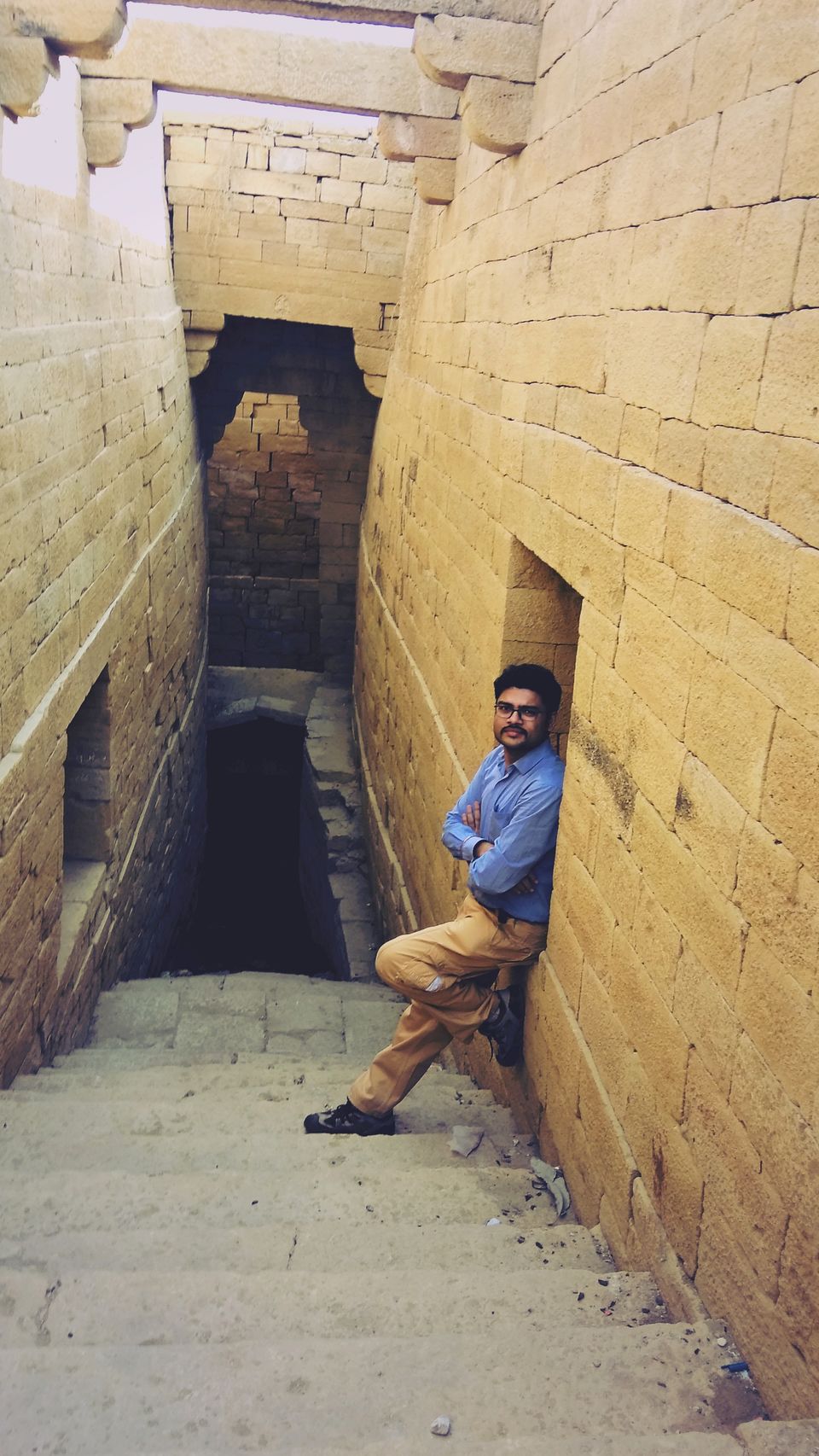
The Archaeological Survey of India is responsible for the upkeep of the area and the government is in the process of developing the area as a complete tourist spot in a public-private-partnership. A house has been re-constructed to recreate the way of life that existed three centuries earlier. The jharokha styled windows, the frescoes on the walls, the stairway leading to the roof – make this an interesting part of the trip.

In years to come, one may perhaps be able to stay the night within the eerie premises of Kuldhara – the dead silence of a village providing the perfect thrill to the seekers.

As our car exit the main gate, we found the old caretaker of the place retelling the story to foreign tourists gathered around him under a tree. He tells in words, what the place possibly tries to tell in whispers. The charm of this place is truly incomplete without the touch of romance and mystery in the narrative.
